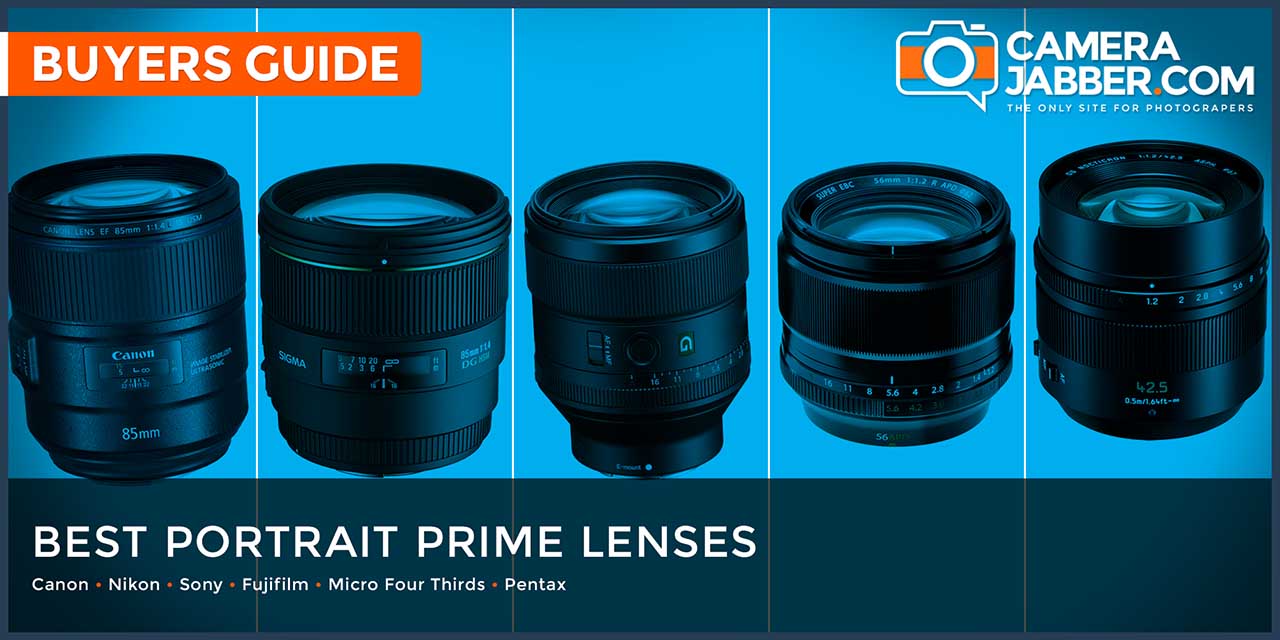You can’t beat a fast prime lens for portraiture. Here are our picks for the best portrait lenses and best-value alternatives for the six best-selling camera brands
For portraiture with full-frame camera bodies, the winning formula is a prime lens with a focal length of around 85mm and a fast aperture rating, typically of f/1.4 to f/1.8. The focal length enables you to capture head & shoulders or half-length portraits from a comfortable distance, so you’re not crowding your subject but are still close enough to give directions.
Optical quality should deliver good sharpness and clarity, while wide apertures enable a shallow depth of field so you can blur the background and focus all the attention on the person your photographing.
Naturally, it’s a different situation if you’re shooting on a crop-sensor camera body. In this case, a 50mm ‘standard prime’ will give an ‘effective’ focal length of 75mm on APS-C format bodies (80mm for Canon), while the 2.0x crop factor of Micro Four Thirds gives a 42.5mm lens the same reach as an 85mm lens in full-frame terms.
Let’s take a look at the best lenses for shooting with Canon, Nikon, Sony, Fujifilm, Micro Four Thirds and Pentax cameras, and the best value options to suit a tighter budget.
So let’s take a look at the best portrait lenses in order of mount type…
Best portrait lenses for Canon
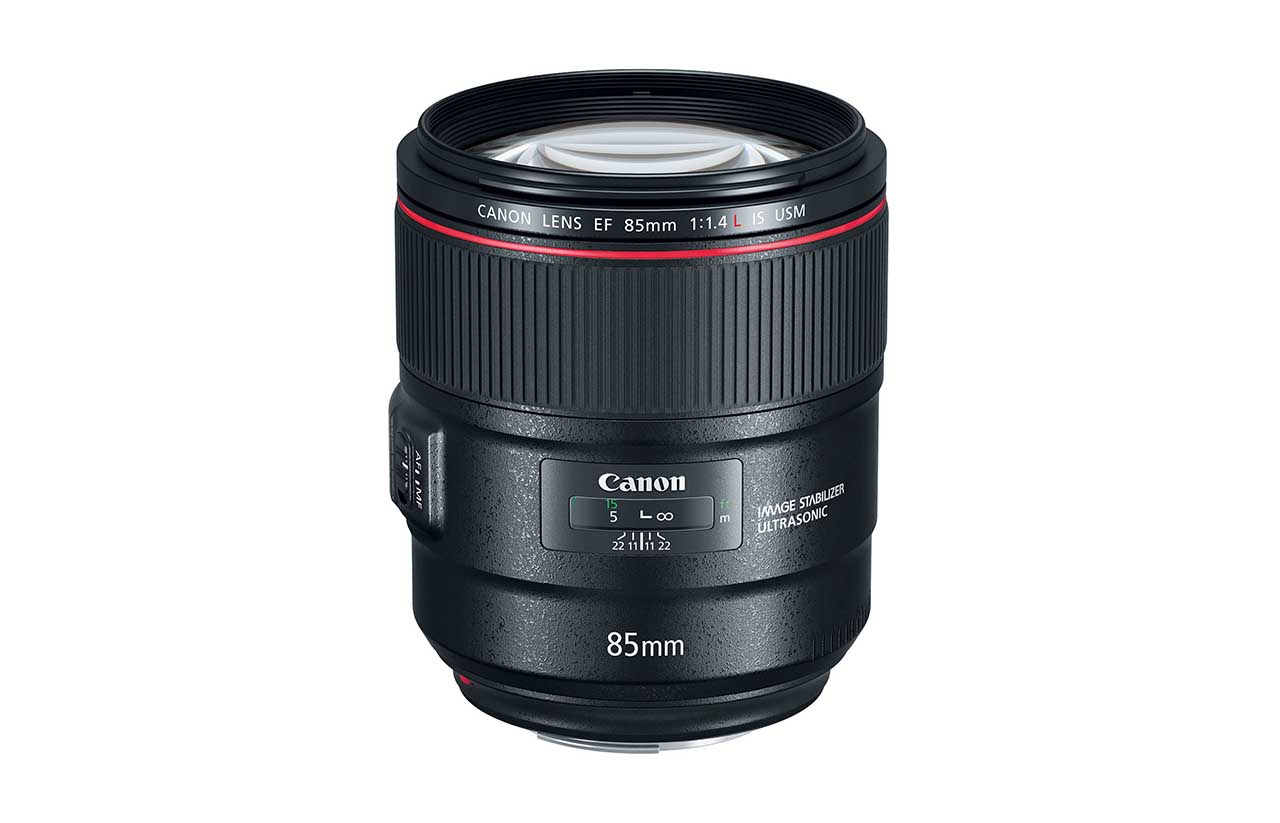
Canon EF 85mm f/1.4L IS USM, Price: £1,340
Canon’s latest portrait prime ticks all the right boxes and more besides
Specs
- Elements/groups: 14/10
- Autofocus type: Ultrasonic (ring-type)
- Minimum focus distance: 0.85m
- Optical stabilizer: Yes
- Dimensions: 89x105mm
- Weight: 950g
Typical of Canon’s L-series lenses, this recent addition to the line-up has a robust and fully professional-grade build, complete with weather-seals. Untypically, it combines a fast f/1.4 aperture with image stabilization.
Some might say the stabilizer is largely superfluous with such a wide aperture rating but it’s actually a big bonus for handheld shooting indoors under ambient lighting, or outdoors at twilight, where shutter speeds can drop.
It’s also useful when you want to stop down and gain a larger depth of field for environmental portraiture, retaining detail in a portrait sitter’s surroundings.
Image quality is excellent although corner-sharpness when shooting wide-open isn’t quite as outstanding as from the competing Sigma f/1.4 Art lens. That shouldn’t be of any real concern for portraiture anyway.
Bokeh remains gorgeous even when stopping down a little, helped by a well-rounded nine-blade diaphragm, while ghosting and flare are kept to a minimum by Canon’s high-tech ‘ASC’ Air Sphere Coating.
Best value alternative
Canon EF 50mm f/1.8 STM, Price: £120
For portraiture with APS-C format Canon DSLRs, we actually prefer this budget f/1.8 STM (Stepping Motor) lens to Canon’s older and pricier 50mm f/1.4 lens. It’s sharper, has an aperture rating that’s only two-thirds of a stop slower, and is unbeatable value for an own-brand Canon lens.
Best portrait lens for Nikon
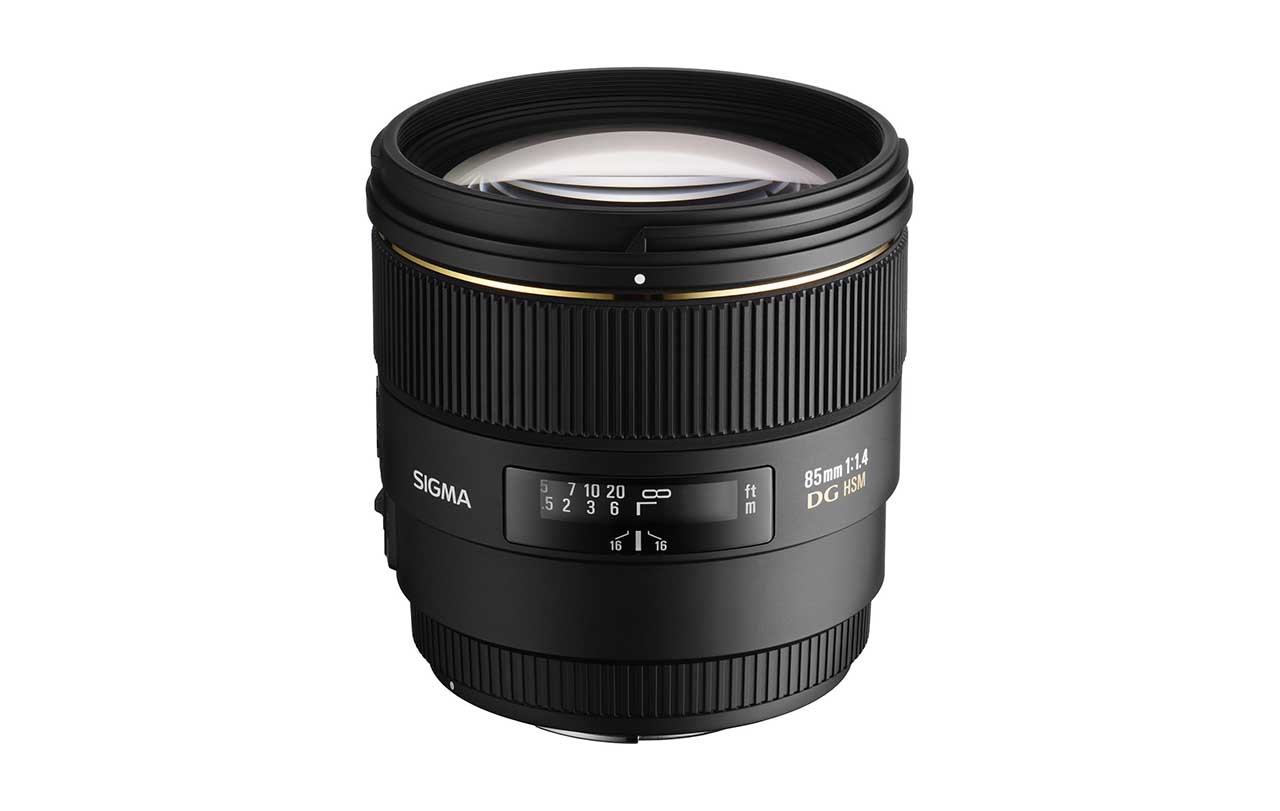
Sigma 85mm f/1.4 DG HSM | A, Price: £1,000
Sigma’s 85mm Art lens is a heavyweight contender in every way
Specs
- Elements/groups: 14/12
- Autofocus type: Ultrasonic (ring-type)
- Minimum focus distance: 0.85m
- Optical stabilizer: No
- Dimensions: 95x126mm
- Weight: 1,130g
The most natural choice for portraiture on full-frame Nikon DSLRs is arguably the own-brand AF-S 85mm f/1.4G.
However, it’s a relatively old and basic design that delivers good rather than exceptional performance, making it look relatively poor value at around £1,430.
Sigma’s 85mm f/1.4 Art lens feels more robust and better-built, boasts cutting-edge optical technology, and combines spectacular wide-open sharpness across the entire image frame. Meanwhile, bokeh is lusciously creamy in defocused areas.
Like other lenses in the ‘Global Vision’ line-up, this one is compatible with Sigma’s optional USB Dock for fine-tuning performance and applying firmware updates. Unlike many Sigma lenses including the 50mm f/1.4 Art, it also incorporates weather-seals.
The only downside with this lens is that, although handling is excellent, it’s a big and weighty beast, being about 50 per cent longer than the competing Nikon lens and nearly twice as heavy. Even so, it doesn’t feel unduly massive on a full-frame DSLR.
Best value alternative
Nikon AF-S 50mm f/1.8G, Price: £200
Sigma makes a 50mm f/1.4 Art lens that’s a better fit for portraiture on APS-C or ‘DX’ format Nikon DSLRs. However, the Nikon 50mm f/1.8 delivers very good image quality, is much smaller and lighter, and only costs a third of the price. It’s a much better value buy.
Best portrait lens for Sony E-mount
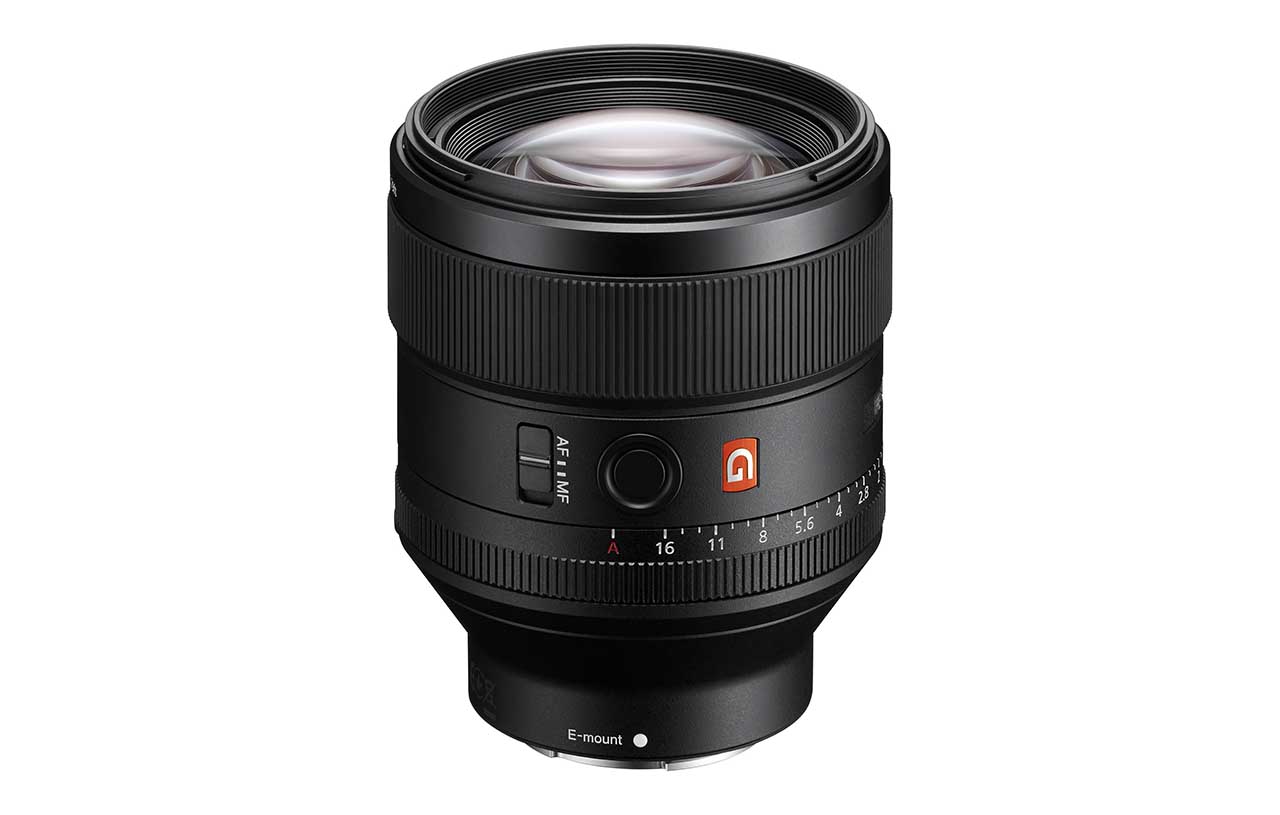
Sony FE 85mm f/1.4 G Master, Price: £1,650
Sony delivers a masterclass in portraiture, with its top-flight 85mm lens
Specs
- Elements/groups: 11/8
- Autofocus type: Stepping motor
- Minimum focus distance: 0.85m
- Optical stabilizer: No
- Dimensions: 90x108mm
- Weight: 820g
Sony has become renowned for taking the megapixel count of its mirrorless cameras to the max. The company’s G Master lenses are designed to do them full justice.
They’re engineered with the aim of delivering supreme sharpness with beautiful bokeh, all wrapped up in a solid, pro-grade construction. This 85mm lens is literally a prime example of the G Master line-up.
It’s an undeniably heavy lens and feels very chunky on one of Sony’s comparatively diminutive mirrorless bodies. Even so, handling is superb.
It’s a particularly hands-on lens that features a raft of controls, including a smooth-action focus ring and an aperture control ring with a ‘declick’ switch, enabling one-third click steps for stills and smooth, click-free aperture transitions for movie capture.
The focus hold switch is unusual for this class of lens, but comes in handy for portraiture. Sharpness is excellent and bokeh is even better, aided by an 11-blade diaphragm that retains a very well-rounded aperture when stopping down. Nano-structure coatings do well to minimize ghosting and flare.
Best value alternative
Sony E 50mm f/1.8 OSS, Price: £220
Designed specifically for APS-C format E-mount cameras, this lens gives an ‘effective’ focal length of 75mm, combined with a usefully wide f/1.8 aperture. Unlike most ‘nifty fifty’ lenses on the market, it adds optical stabilization. Good performance makes it a top-value buy at the price.
Best portrait lens for Fujifilm X-mount
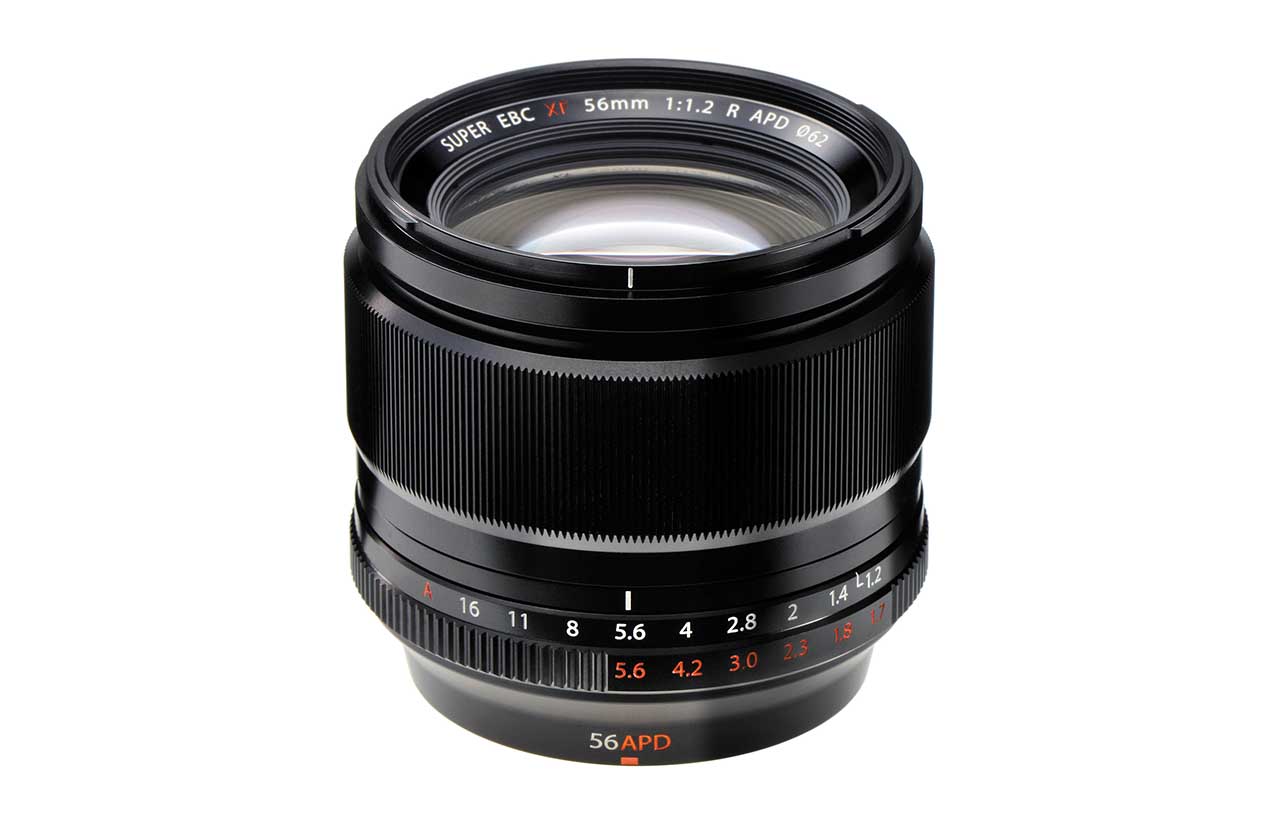
Fujifilm XF56mm f/1.2 R APD, Price: £1,160
This intriguing Fujinon lens goes further than most in the pursuit of beautiful bokeh
Specs
- Elements/groups: 11/8
- Autofocus type: Stepping motor
- Minimum focus distance: 0.7m
- Optical stabilizer: No
- Dimensions: 73x70mm
- Weight: 405g
The regular edition of Fujifilm’s 56mm f/1.2 lens is a good fit for portraiture on the company’s X-mount mirrorless bodies, combining an effective focal length of 84mm with a super-fast f/1.2 aperture.
Even so, considering that depth of field is more dependent on ‘actual’ rather than ‘effective’ focal length, it can still be a bit of a struggle to get really smooth background blur.
This ‘APD’ version of the lens comes to the rescue with a secret weapon, in the shape of a built-in apodization filter. The filter cunningly smooths the outlines of objects that fall outside the in-focus region, giving backgrounds a silky-smooth, creamy appearance.
Build quality is typically excellent, for one of Fujifilm’s up-market X-mount lenses, and handling is very refined complete with a physical aperture ring. The apodization filter slightly reduces light transmission, so the aperture ring has a secondary set of numbers marked in red.
And so that you can make minimize depth of field with wide apertures, even under bright lighting, the lens is supplied complete with a three-stop neutral density filter.
Best value alternative
Fujifilm XF50mm f/2 R WR, Price: £450
At around a third of the price of the Fujifilm 56mm APD lens, this one has a slightly shorter focal length and a narrower aperture rating of f/2. It’s still very nicely engineered but is rather more compact and lightweight. It’s the best-value buy for Fujifilm X-series portraiture.
Best portrait lens for Micro Four Thirds
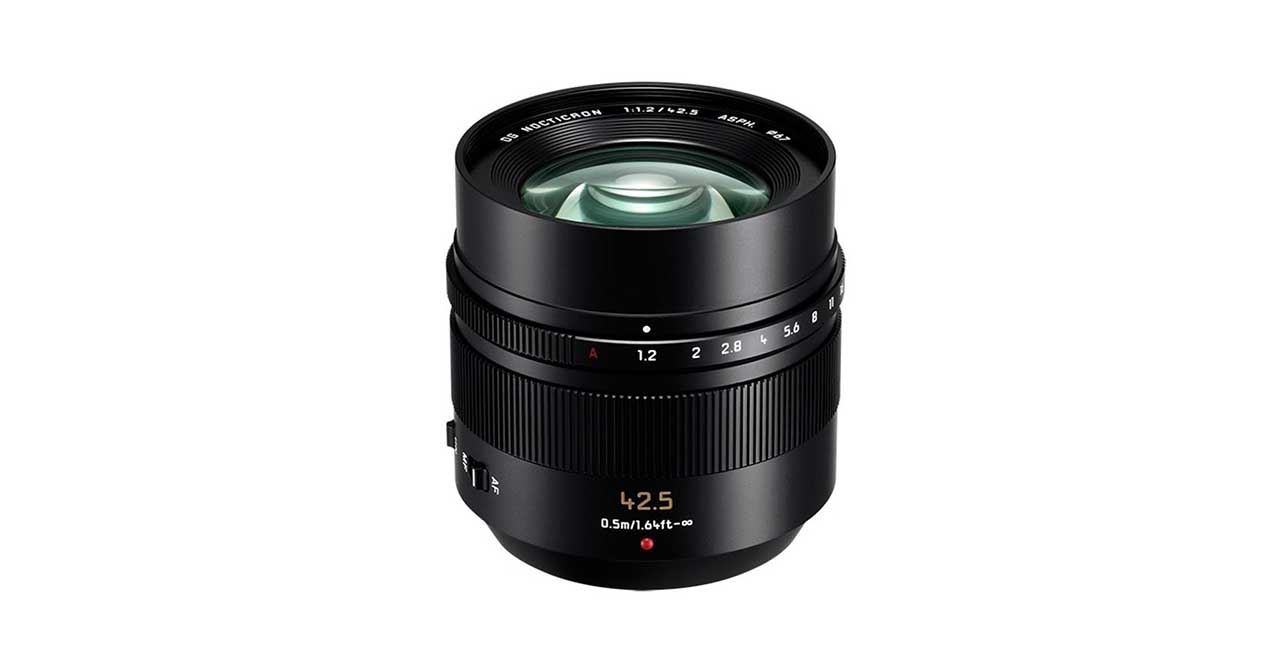
Panasonic 42.5mm f/1.2 ASPH Leica DG Nocticron OIS, Price: £1,200
This lens adds genuine shallowness to Micro Four Thirds portraiture
Specs
- Elements/groups: 14/11
- Autofocus type: Stepping motor
- Minimum focus distance: 0.5m
- Optical stabilizer: Yes
- Dimensions: 74x77mm
- Weight: 425g
The 2.0x crop factor of the Micro Four Thirds format is great for boosting depth of field at any given ‘effective’ focal length. It’s ideal for landscape and architectural photography, and any other scenario in which you want to maintain a sharp appearance for everything from close-by to far-away objects.
But it works against you for portraiture, when you might prefer to blur the background.
This superb lens is based on Leica’s legendary ‘Nocticron’ principles and boasts an ultra-large f/1.2 aperture. It goes a lot further than most MFT lenses in its ability to shrink depth of field. It also delivers the favoured 85mm effective focal length that’s often perfect for portraiture.
When stopping down to retain sharper backgrounds, or under dull lighting, camera-shake worries are minimized by a built-in optical stabilizer, which is practically unheard of in f/1.2 lenses.
Overall, it’s an impeccably built lens that delivers premium performance and sumptuous image quality, albeit at a steep purchase price.
Best value alternative
Olympus 45mm 1:1.8, Price £210
At about a quarter of the weight and a sixth of the price of the Panasonic Nocticron, this Olympus lens is nevertheless smartly turned out and delivers very pleasing performance. Image quality is pretty sharp but bokeh can be a little lacking in smoothness. Even so, it’s a top budget buy.
Best portrait lens for Pentax K-mount
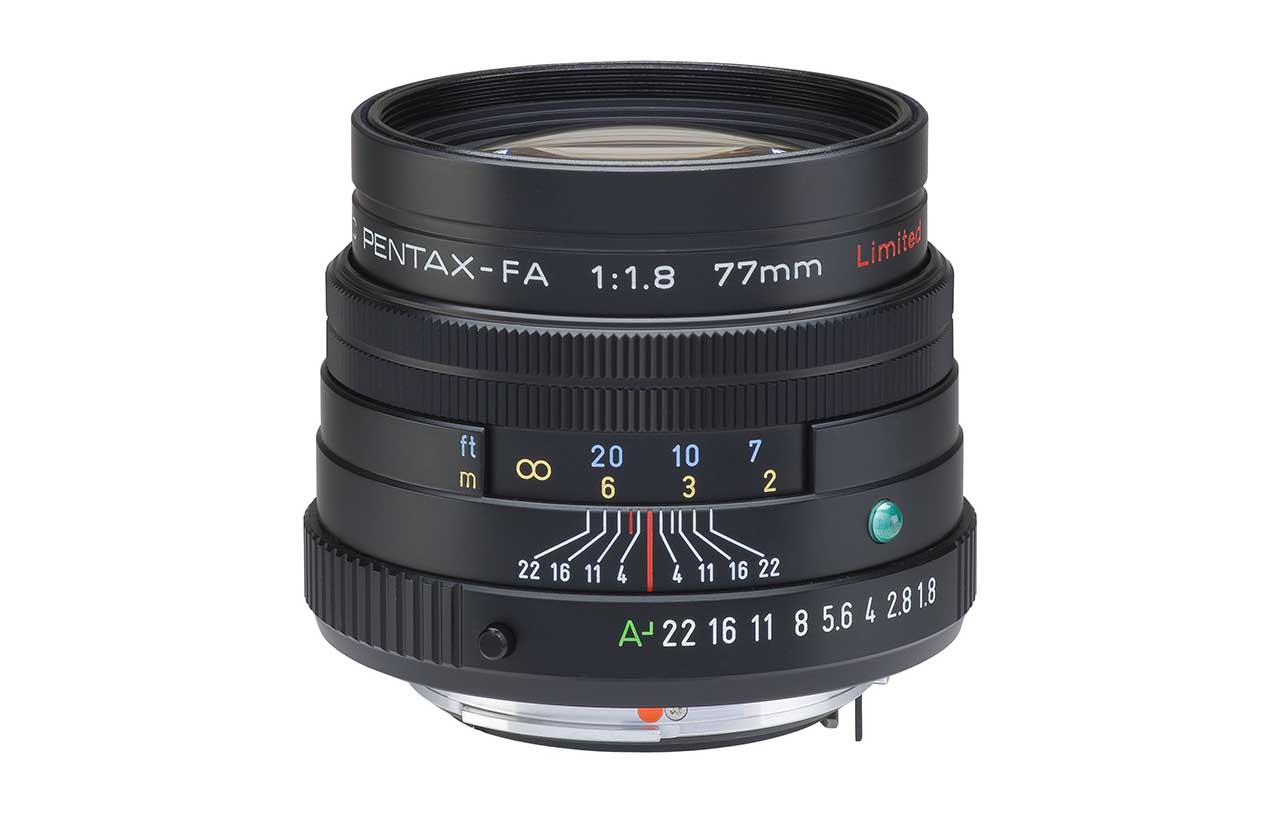
Pentax 77mm f/1.8 SMC FA Limited, Price: £930
It’s a full-frame compatible lens that’s designed for portraiture
Specs
- Elements/groups: 7/6
- Autofocus type: Via in-camera motor
- Minimum focus distance: 0.7m
- Optical stabilizer: No
- Dimensions: 48x64mm
- Weight: 270g
Compared with many recently designed prime lenses with similar focal lengths, this Pentax is a tiny lightweight. For example, it’s half the length and only a quarter of the weight of Sigma’s relatively new 85mm f/1.4 Art lens for full-frame Canon, Nikon and Sony cameras.
Available in black or silver, the Pentax also has a much more retro-looking design, with its manual aperture ring and engraved focus distance scale that comes complete with depth of field markings for f/4, f/11, f/16 and f/22.
Pentax says that the lens was designed specifically for portrait photography, primarily on full-frame bodies.
Beautifully crafted, the lens looks and feels fabulous, and has image quality to match. Sharpness, contrast and colour rendition are all excellent, colour fringing and distortion are negligible, and resistance to ghosting and flare is highly impressive.
Bokeh is soft and creamy at wide apertures but, naturally, you can’t shrink the depth of field quite as much as with an 85mm f/1.4 lens.
Best value alternative
Pentax 50mm f/1.8 SMC DA, Price: £130
The polar opposite of the Pentax 77mm in its design ethic, this lens has no focus distance scale nor an aperture ring, and only a plastic mounting plate. It’s designed specifically for APS-C format DSLRs, so isn’t compatible with full-frame cameras, but image quality is very impressive in all respects, and it’s a steal at the price.
